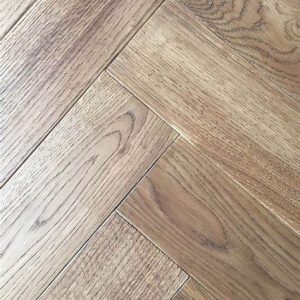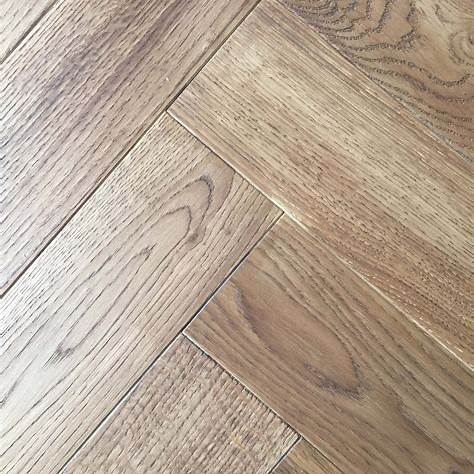
Embarking on the journey of hardwood floor ownership can be both exciting and daunting. This guide demystifies hardwood floor care for beginners, providing a clear, step-by-step approach to maintaining their beauty and longevity.
We’ll break down the essentials into manageable steps, ensuring you feel confident and equipped to care for your floors.
Chapter 1: Understanding Your Hardwood Floors: The Foundation of Care
- 1.1 Identifying Your Finish:
- The finish is the protective layer on your hardwood floors, and it dictates how you clean them.
- Most modern hardwood floors have a surface finish like polyurethane or urethane. These create a durable, protective layer on top of the wood.
- Older floors might have penetrating finishes like oil or wax, which require different care.
- If unsure, consult your flooring installer or manufacturer.
- 1.2 Distinguishing Solid vs. Engineered Hardwood:
- Solid hardwood is made from a single piece of wood, while engineered hardwood has multiple layers with a hardwood veneer on top.
- Engineered hardwood is 1 generally more resistant to moisture, but both types require careful maintenance.
1. triarthardwoods.com
- Knowing which you have is important for dealing with moisture issues.
- 1.3 The Importance of pH-Neutral Cleaners:
- Hardwood floors require cleaners specifically designed for them.
- pH-neutral cleaners are gentle and won’t damage the finish.
- Avoid harsh chemicals, ammonia, bleach, and oil soaps, as they can dull or damage the floor.
Chapter 2: Daily and Weekly Routines: Building Good Habits
- 2.1 The Daily Gentle Sweep (5-10 Minutes):
- Use a microfiber dust mop or a soft-bristle broom to remove dust, dirt, and pet hair.
- Microfiber is excellent because it traps dust, not just moves it.
- Sweep in the direction of the wood grain to avoid pushing dirt into the seams.
- This daily habit prevents scratches from abrasive particles.
- 2.2 The Weekly Vacuum Session (10-15 Minutes):
- Use a vacuum cleaner with a soft brush attachment.
- Avoid vacuums with beater bars, as they can scratch the finish.
- Pay attention to edges and corners where dust accumulates.
- This removes larger debris that the dust mop may miss.
- 2.3 Immediate Spill Response (1-2 Minutes per spill):
- Blot spills immediately with a dry, absorbent cloth.
- Avoid rubbing, as this can spread the spill and damage the finish.
- For sticky spills, lightly dampen a cloth with water or a hardwood-specific cleaner.
- Dry the area thoroughly.
Chapter 3: Periodic Deep Cleaning: Maintaining the Shine
- 3.1 The Controlled Damp Mop (Bi-Weekly/Monthly – 15-20 Minutes):
- Use a microfiber mop wrung thoroughly to be only slightly damp.
- Excess water can damage hardwood.
- Use a pH-neutral hardwood floor cleaner, diluted as instructed.
- Mop in the direction of the wood grain.
- Dry any remaining damp spots immediately.
- 3.2 Spot Treatment for Stubborn Stains (5-10 Minutes per stain):
- Identify the stain (water-based, oil-based, pet stains).
- Use a hardwood-safe stain remover or a homemade solution (vinegar and water, baking soda paste).
- Test any solution in an inconspicuous area first.
- Gently scrub with a soft cloth or sponge.
- Dry the area thoroughly.
Chapter 4: Preventative Measures: Protecting Your Investment
- 4.1 Strategic Mat and Rug Placement:
- Place mats at entrances to trap dirt and moisture.
- Use area rugs in high-traffic areas and under furniture.
- Avoid rubber backed rugs, as they can trap moisture.
- 4.2 Furniture Protection with Felt Pads:
- Attach felt pads to the legs of all furniture.
- Replace worn pads regularly.
- Furniture glides are good for heavy furniture.
- 4.3 Pet Care and Protection:
- Keep pet nails trimmed to minimize scratches.
- Place mats under pet food and water bowls.
- Clean up pet accidents immediately.
- 4.4 Humidity Control:
- Maintain a consistent relative humidity level between 35% and 55%.
- Use a hygrometer to monitor humidity.
- Employ humidifiers or dehumidifiers as needed.
- Good ventilation in kitchens and bathrooms is also important.
- 4.5 Sunlight Protection:
- Use curtains or blinds to shield the floor from direct sunlight.
- Consider UV-blocking window film.
Chapter 5: Long-Term Care: Ensuring Longevity
- 5.1 Recoating (Every 3-5 Years):
- Apply a fresh layer of finish to restore protection and shine.
- Best done by a professional.
- 5.2 Refinishing (Every 10-20 Years):
- Sanding down the existing finish and applying a new stain and finish.
- Necessary for heavily damaged floors.
- Should only be done by a professional.
Amazon Product Recommendations:
- Bona Hardwood Floor Cleaning Kit:
- A complete set of tools and cleaners for beginners.
- Furniture Felt Pads:
- Easy and effective furniture protection.
- Search amazon for “furniture felt pads”.
Conclusion:
Hardwood floor care doesn’t have to be overwhelming. By following these simple steps, beginners can maintain the beauty and longevity of their floors. Remember, consistency is key. Daily and weekly routines, along with preventative measures, will go a long way in keeping your floors looking their best.
